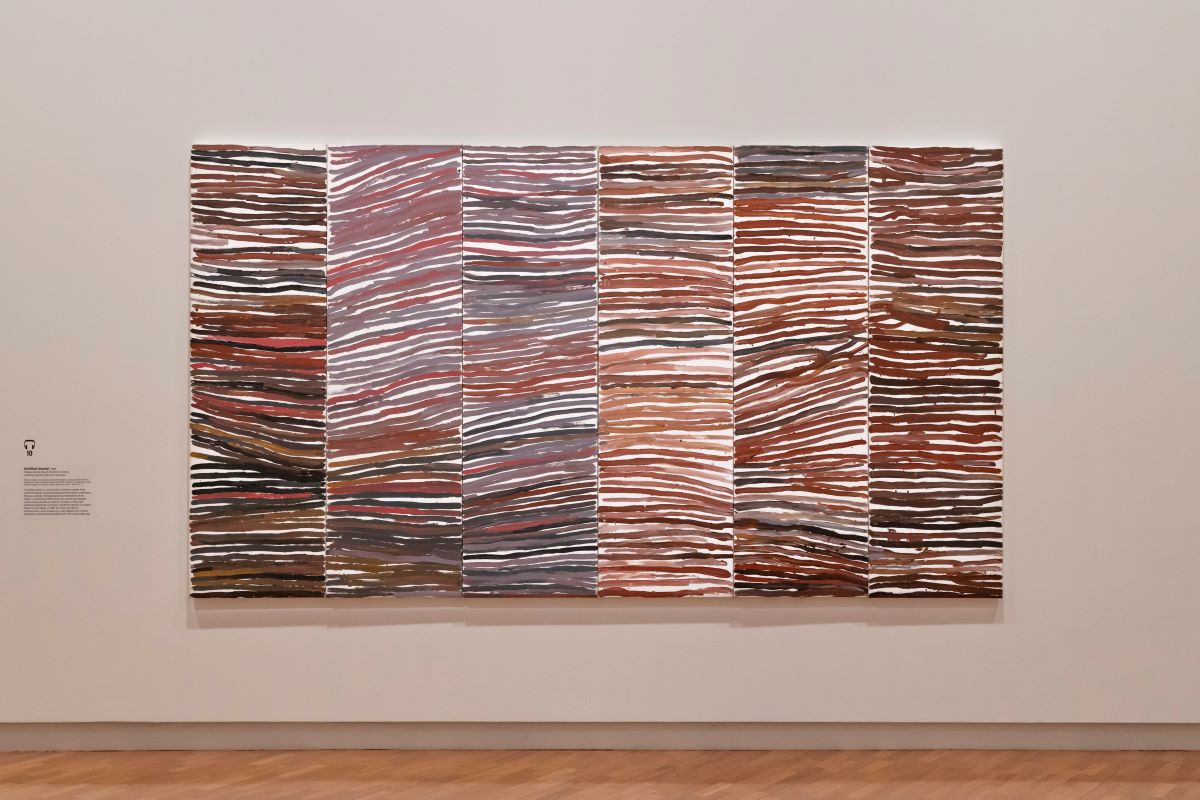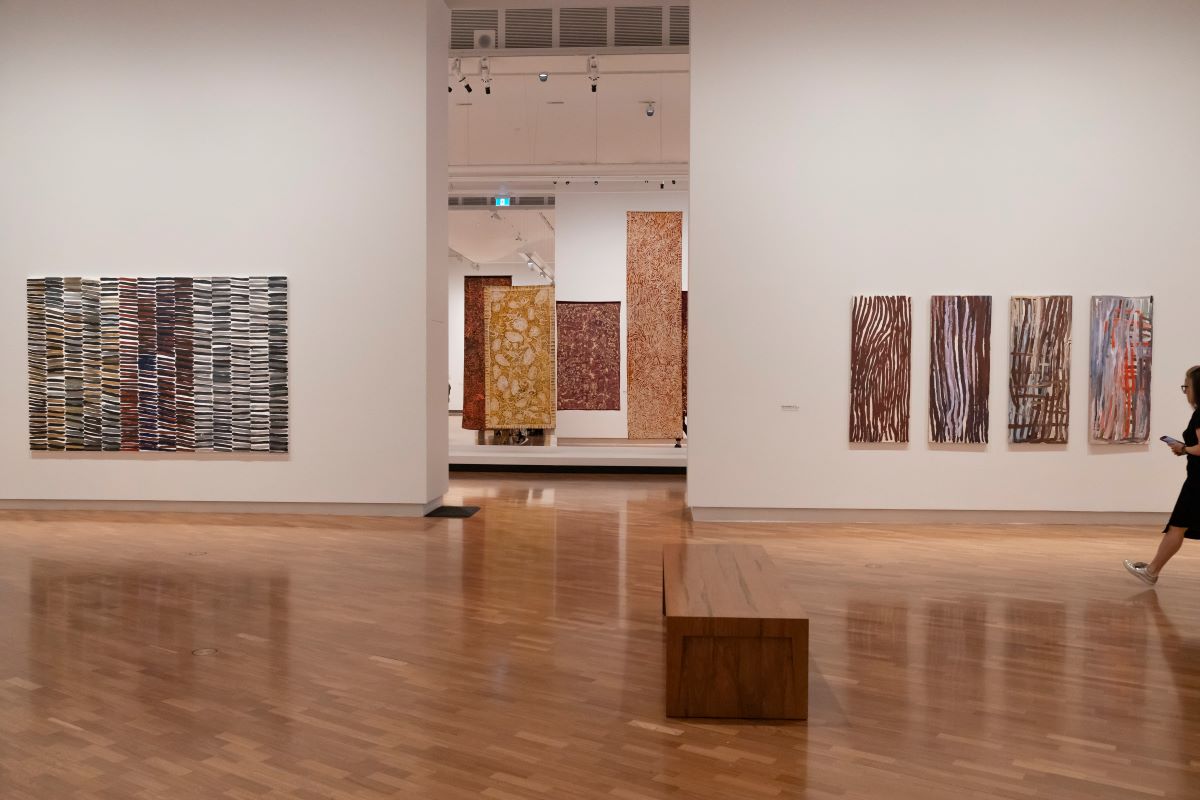In a first for the National Gallery of Australia, a First Nations woman fills the coveted summer blockbuster exhibition space as the works of Emily Kam Kngwarray are displayed until 28 April.
Regarded as one of Australia’s leading painters of modern times, the senior Anmatyerr woman had a unique rise to the spotlight, completing her works in the final years of her life. The prolific painter is estimated to have completed more than 3,000 paintings in eight years; striking works that capture her incredible life, culture, and connection to country.
“It’s so embodied, it’s gestural, it’s all connected to her culture, her country and her community. She started in batik and did batik technique on cotton and silk prior to even going into painting,” says Kelli Cole, Warumungu and Luritja woman, co-curator of the exhibition.
A founding member of the Utopia Women’s Batik Group in 1977, all artists were held equal and encouraged to create. It wasn’t until 1989 that Kngwarray created her first painting, Emu Woman, as part of The Summer Project to be displayed S.H. Ervin Gallery in Sydney. Her image was used as the cover of promotional material and received national attention.
“The Central Australian Aboriginal Media Association commissioned a body of work and 100 canvases were dropped off to the homelands around Utopia and 81 were collected … That’s where she was singled out, announced as one of the key artists,” says Ms Cole.
These 81 works created by the community can be seen at the entrance to the exhibition.
“That is connecting her back to her culture, back to her community, and repositions her where she is from, that’s the Alhalkere and Anmatyerr that are sibling countries.”
It didn’t take long for an interest in Kngwarray’s work to be sparked; that interest remains strong today, nearly 30 years after her passing. Already in her late 70s when she started painting, Ms Cole says that most of Kngwarray’s practice is born from Awelya, women’s ceremony.
“Dance and song, so some of the works are quite figurative and you’ll see works that have crossed the chest, where you’ve swiped your hand across the chest, down the women’s breast and then the top of the arms; that gestural motion of her doing it in the sand and on the women’s bodies prior to going on a painting.”



Through more than 80 works, the exhibition is a catalogue of Kngwarray’s far-reaching talent. It holds paintings, batik textiles, works drawn on paper from national and international collections, as well as private works that have not been displayed before.
The influential artist has been celebrated with multiple solo exhibitions across Australia; Ms Cole says it is so important to show Kngwarray’s work at NGA as she is such a significant artist. Setting this newest exhibition apart from the others was the active collaboration with the community in Utopia, where the artist is affectionately known as ‘this old lady’.
“There were so many Emily Kam Kngwarray exhibitions previously, but the text written about her does not come from the roots of family or community or connection. It is exhibitions that have had non-Indigenous scholars write about them more than First Nations scholars.
“It’s almost like that information that they had was just a surface of the information that we’ve received from the women. Every single painting, batik, photograph of this old lady has not only been signed off by the community, but we’ve worked and collaborated together in what is the best way to express this old lady,” says Ms Cole.

The knowledge that she and co-curator Hettie Perkins, an Arrernte and Kalkadoon woman, learned doesn’t come lightly; Ms Cole says it comes after years and years of relationships.
“Collaborations or consultations are not just about giving or taking. We lived out on Alice Springs and spent all our time on the community and we’ve really got that trust and relationship, which is really important to us as Aboriginal women.”
Ms Coles hopes visitors will take the opportunity to deepen their understanding of Indigenous culture through this beautiful, sophisticated exhibition grounded in that culture.
“I just would love people to come see this exhibition, not only view it; this is an exhibition that you feel, it is evocative, pulsing with energy,” she says.
Continuing to build the Know My Name initiative, the Gallery is dedicated to showing women artists so visitors can better understand their contribution to Australia’s cultural landscape. As part of the initiative, Emily Kam Kngwarray and Deep Inside My Heart can both be seen at the NGA until after the first quarter of 2024.
See the works of Emily Kam Kngwarray at the National Gallery of Australia until 28 April 2024; nga.gov.au
Canberra Daily is keen to hear from you about a story idea in the Canberra and surrounding region. Click here to submit a news tip.



